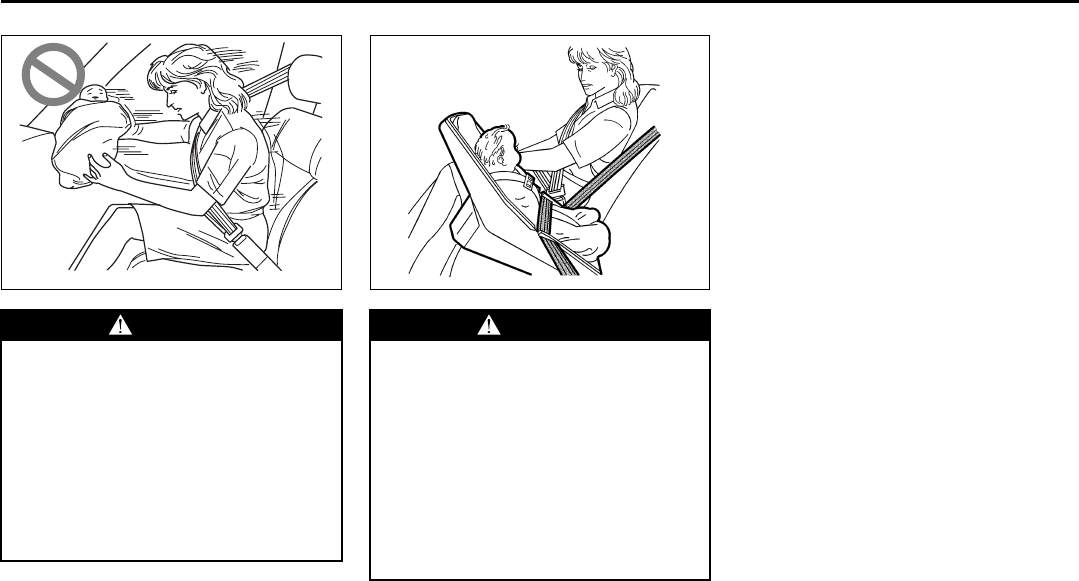
1-17
SEATS AND RESTRAINT SYSTEMS
85Z14-03E
Question: What are the different types
of add-on child restraints?
Answer: Add-on child restraints, which are
purchased by the vehicle’s owner, are
available in four basic types. Selection of a
particular restraint should take into consid-
eration not only the child’s weight, height
and age but also whether or not the
restraint will be compatible with the motor
vehicle in which it will be used.
For most basic types of child restraints,
there are many different models available.
When purchasing a child restraint, be sure
it is designed to be used in a motor vehicle.
If it is, the restraint will have a label saying
that it meets federal motor vehicle safety
standards.
The restraint manufacturer’s instructions
that come with the restraint, state the
weight and height limitations for a particu-
lar child restraint. In addition, there are
many kinds of restraints available for chil-
dren with special needs.
WARNING
People should never hold a baby in
their arms while riding in a vehicle. A
baby doesn’t weigh much – until a
crash occurs. During a crash a baby
will become so heavy it is not possi-
ble to hold it. For example, in a crash
at only 25 mph (40 km/h), a 12-lb. (5.5
kg) baby will suddenly become a 240-
lb. (110 kg) force on a person’s arms.
A baby should be secured in an
appropriate restraint.
L3U1039A
WARNING
Children who are up against, or very
close to, any air bag when it inflates
can be severely injured or killed. Air
bags plus lap-shoulder belts offer
outstanding protection for adults and
older children, but not for young chil-
dren and infants. Neither the vehi-
cle’s safety belt system nor its air bag
system is designed for them. Young
children and infants need the protec-
tion that a child restraint system can
provide.
L3U1040B
Child Restraints:


















